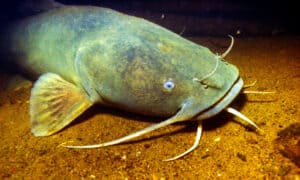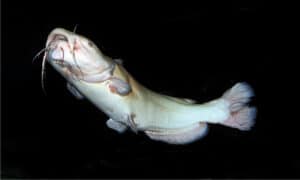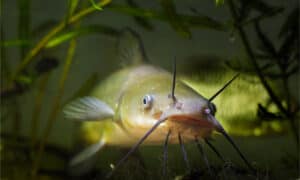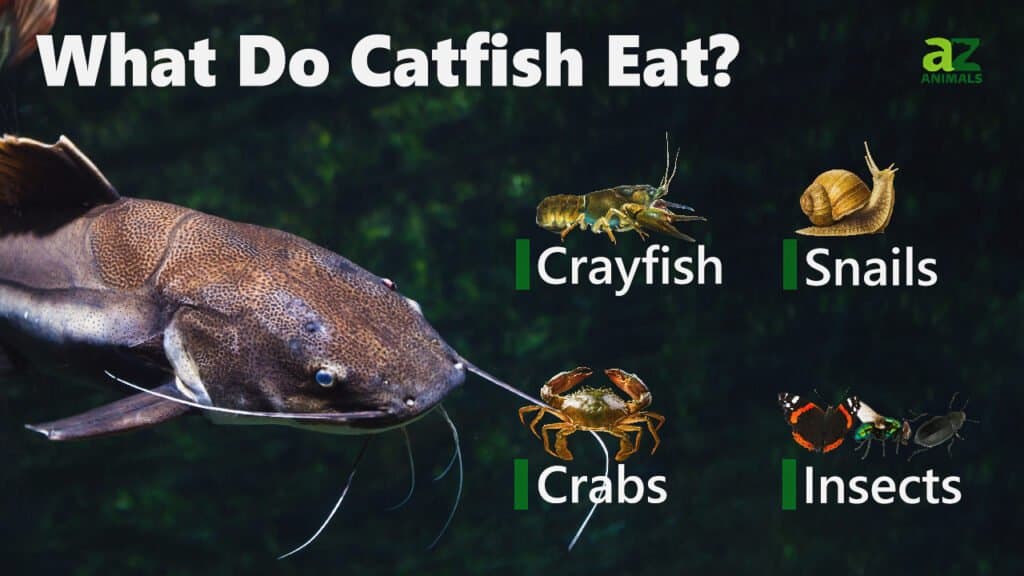
Catfish are fish characterized by long barbels coming out from the sides of their face, looking like cat whiskers. There are close to 3,000 species of catfish with the channel catfish being the most common. Most of the species live in freshwater, but there are some species like the hardhead catfish that live in saltwater. You are probably thinking catfish eat mouse fish (is that a thing?), but let’s find out what they do eat!
How do catfish eat?
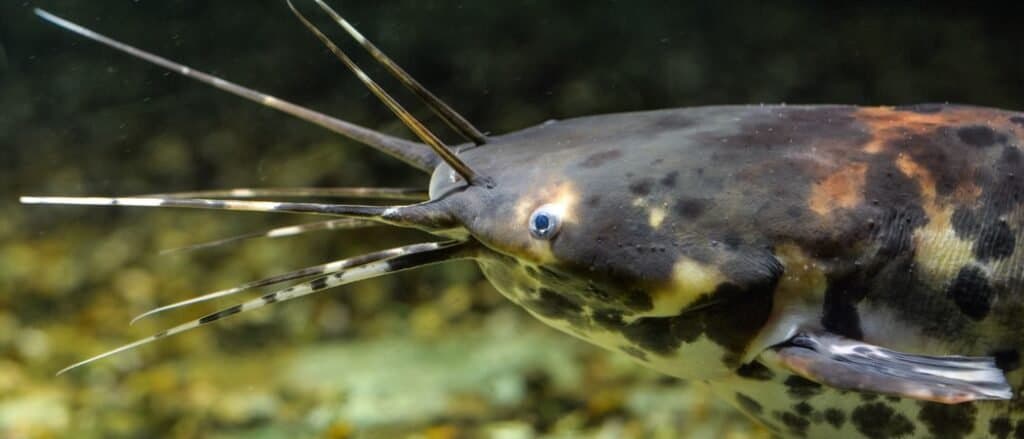
The barbells on a catfish’s face that are used to locate prey
©Svietlieisha Olena/Shutterstock.com
Do catfish wait for food to come to them or do they actively seek out food? As scavengers they are always on the lookout for food. They seem to prefer fresh food but will also eat dead animals/fish that are available. Catfish use the barbels on their face to locate prey. The barbels have both taste and smell to help them find food in the dark muddy waters they typically live in.
What do catfish eat?
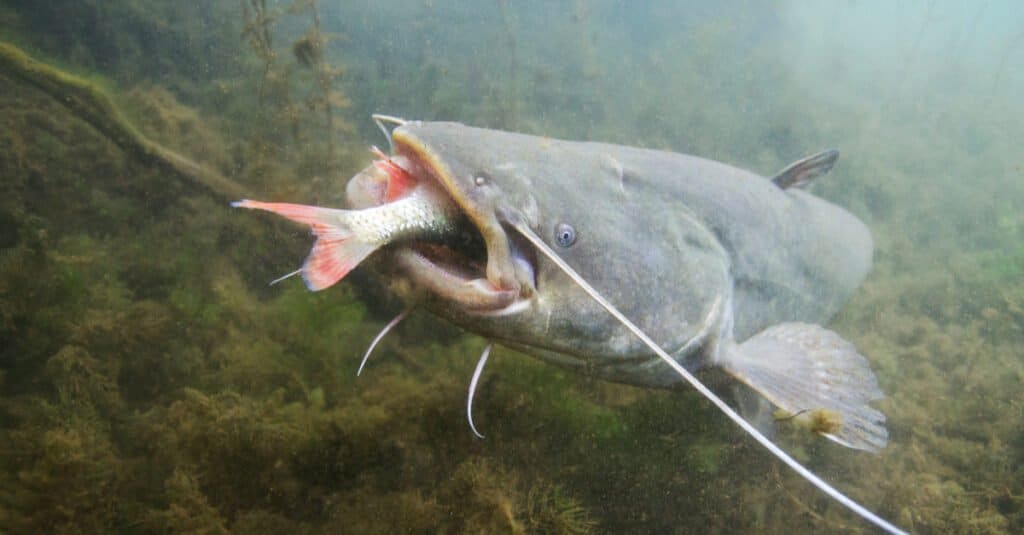
A catfish eating a small fish
©Rostislav Stefanek/Shutterstock.com
Catfish are opportunistic feeders meaning they will adapt to the food that is currently available. Catfish eat a variety of small fish, mollusks, insects, crayfish, snails, clams and frogs. They also will eat algae and the remains of dead fish and plants that are floating in the water. Headwater catfish, the ones that live in saltwater, will eat seagrass, sea cucumbers, shrimp and blue crabs.
A complete list of what Catfish eat:
- Crayfish
- Small fish
- Snails
- Clams
- Aquatic Insects
- Algae
- Frogs
- Detritus
- Phytoplankton
- Seagrass
- Sea Cucumbers
- Shrimp
- Blue Crabs
Do young catfish eat the same as adult catfish?
Young catfish and adult catfish diets do differ. In a study of channel catfish that was done in Central Italy researchers studied the diets of catfish to compare what they eat. What they found was that males and females seem to have similar diets, but young catfish and older catfish diets were different. The stomachs of the smaller catfish contained detritus (broken down parts of dead plants and animals) and phytoplankton (microscopic single-celled plants). The stomachs of the adult catfish contained topmouthed gudgeon (a small fish about the size of your index finger) and red swamp crayfish. Based on this research it appears that as the catfish can handle larger fish and crayfish as they themselves grow larger.
How do catfish fit into the ecosystem?
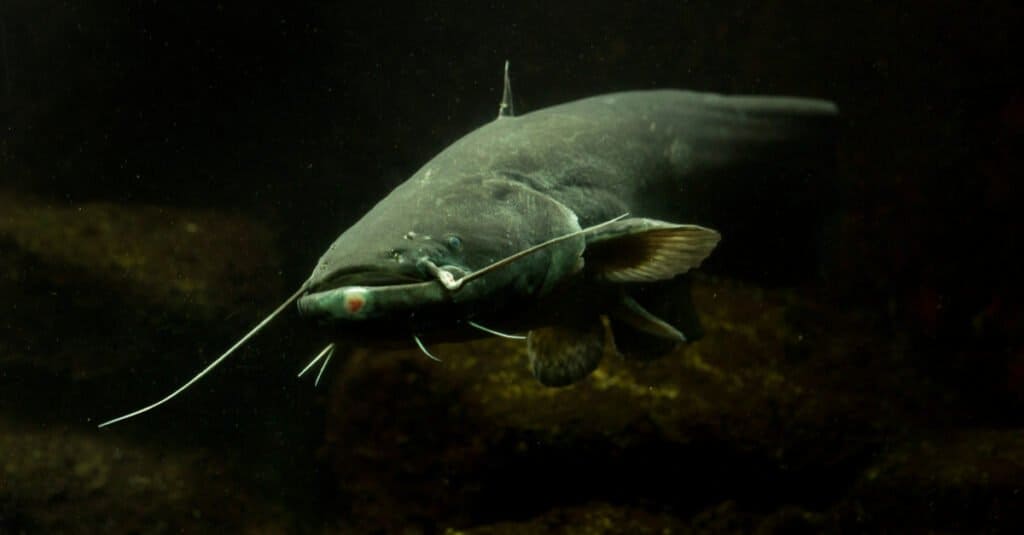
A
wels catfish
©Podolnaya Elena/Shutterstock.com
According the NOAA, one variety of catfish, the blue catfish is considered an invasive species. In the Chesapeake Bay area, the Blue catfish are creating an imbalance in the food web. Because they can eat such a variety of foods they are growing in numbers. They also will challenge and win against larger fish which also upsets the food chain. There are established workgroups addressing the issue and coming up with a plan to manage the blue catfish population in that area.
What eats Catfish?

Catfish is commonly eaten in many cultures
©Elena Veselova/Shutterstock.com
Does Crispy Southern Fried Catfish sound good to you? That’s because it is delicious, making humans as one of the predators of catfish. Crocodiles, birds of prey and larger fish also eat catfish but they typically skip the Cajun seasoning!
The photo featured at the top of this post is © Rostislav Stefanek/Shutterstock.com
Thank you for reading! Have some feedback for us? Contact the AZ Animals editorial team.




